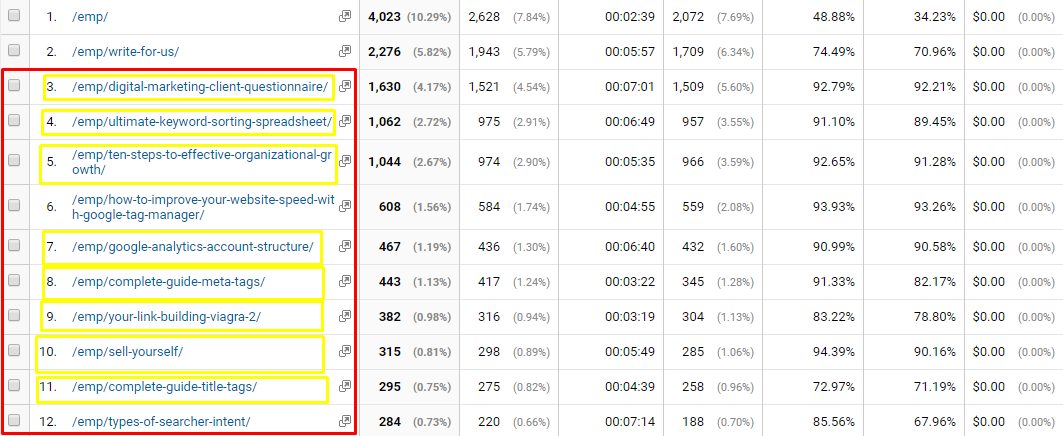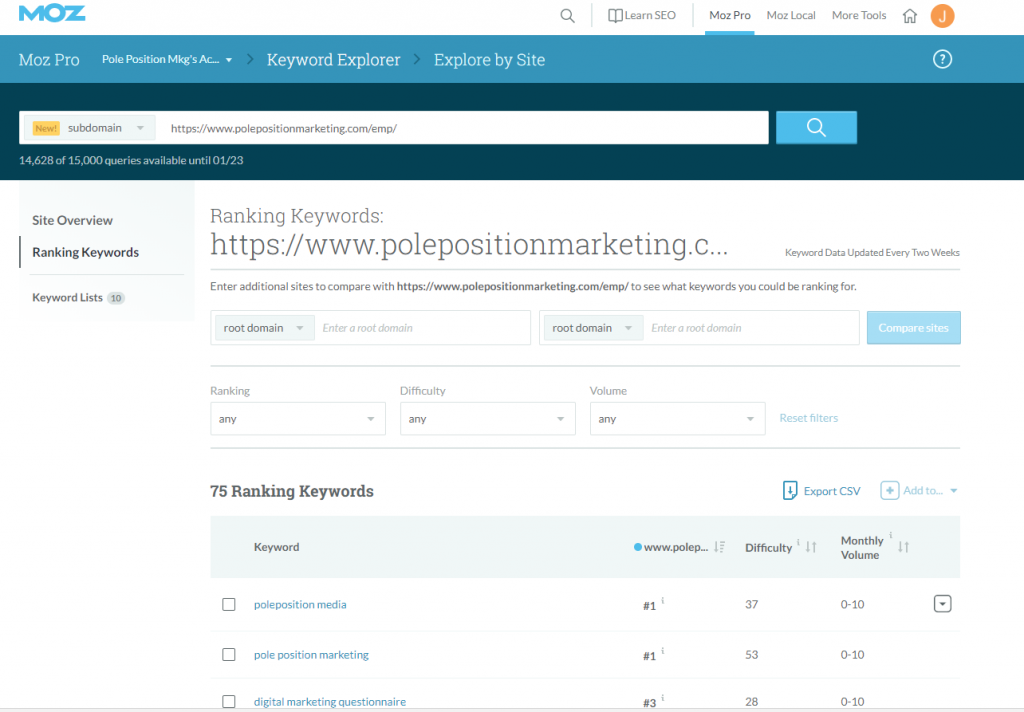
All content at some point loses steam. Traffic dries up, and it simply outlives its useful life. But you don’t have to let your content age naturally. Put a little wrinke cream on your best posts and cover the grays with the tips below.
The Case For Updating Posts
First, you may be wondering why you should even bother with these old posts. Well, besides the fact that updating them will likely take much less time than writing a new post, they can pull in more organic traffic because they already have earned some authority. Orbit Media Studios found this to be true when they updated a post that was still getting modest traffic. With little extra effort, they were able to double the weekly traffic they were getting from that one post.
Hubspot adopted this technique when they realized that 69% of their traffic in a given month came from posts published prior to that month. Take a look at your own posts and you’ll likely find the same. What if, like Orbit Media, you could get those older posts in front of new eyeballs and drive even more traffic to them?
We’ve been doing this with an old usability series we created back in 2007. The advice is still sound, and in many cases, the articles only need some fresh visuals and a few changes to make them relevant, so we’ve been republishing the series with an updated publish date.

Which Posts to Update
The first step is to select the prime candidates for a refresh. You’re looking for posts are overall still relevant but that are a little outdated. The best posts to update are those that still draw some organic traffic and rankings.
Google Analytics can quickly help you see which posts are driving traffic. To do this, go to Behavior>Site Content>Content Drilldown and select your blog’s path. Doing this for Pole Position Marketing, I can tell that 8 out of our top 10 traffic-driving posts last year were published prior to 2017. The posts boxed in yellow were created before last year.

These are posts we would want to consider updating.
Other posts ripe for updating are those that are ranking in the search engines but not as high as they could be. Look for older posts that fall just below position 10, indicating that they would be relegated to the second page in the SERPs.
One tool you can use to find this information is Moz. Go to the Keyword Explorer, select “subdomain” from the search drop down, and then enter your blog’s url. Click on the search button to reveal the ranking keywords. You can export the data to a spreadsheet to see which specific posts are ranking.

While far lower down on the priority list, you may also want to look at older posts that aren’t performing well but that have really good information. Perhaps they were not promoted or optimized well the first time they were published and an update could help them reach their true potential. Maybe they didn’t have enough content to gain traction in the search engines. These posts could also be worth a second look and save you the time of starting from scratch.
What to Update
Once you have identified the best candidates, it’s time to go to work. When updating, you want to do more than just change a few words and call it a day. Your goal is to significantly improve the post and provide long-term value to your readers. With that in mind, here are some key things you want to look for when updating your post:
- Spelling and grammatical errors. You would think that since it’s already been published, your piece would be perfect, but you may be surprised at what mistakes mad their way through, especially if you were lax about proofreading in the past.
- Outdated information. One of the main things you want to do when updating an article is remove any out-of-date statistics and information. To keep your post as evergreen as possible, you should avoid references like “recently” or “last week.”
- Links. Make sure all links, internal and external, still work. Make sure the information they lead to is still relevant, and if not, consider linking to different sources.
- Images. If you’re like a lot of businesses out there, you didn’t necessarily pay a lot of attention to visuals back in the day. Or perhaps you used tired stock photos or clip art. Now’s the time to make sure your post has a compelling main image and supporting images throughout.
- Examples. If you used examples to illustrate your points, make sure they’re still relevant or see if you can find more recent examples.
- General content. Once you’ve ditched the outdated content and errors, you should be left with relevant content. But is it enough? Is your post still the best source on the internet for the topic? Do a quick Google search and see what else is out there. Consider what additional information and tips could be helpful.
- Format. Does your format seem outdated? What can do you to make the article more appealing and readable? Consider adding headings, bulleted and numbered lists, videos and images to illustrate points, etc. The post should be scannable and skimmable.
- Optimization. If you didn’t optimize the post for search in the first go-round, now’s the time. Do some keyword research and utilize your chosen keyword phrase naturally throughout the content and in your title tag. Make sure you write a compelling meta description that entices searchers to click from the search engine results.
- Call-to-Action. Does the post have a call-to-action? If not, add one. If it already does, make sure it’s still relevant and update accordingly.
What Not to Update
Don’t change the url on your post. The whole point is to build on the post’s existing authority and traffic. If you are editing far ahead of the new publish date, make your changes in Word to copy and paste into the post on the publish date. You don’t want to reschedule the post for a later date because that will unpublish it and give visitors a 404 error if they land on that page before you republish.
If your post is already ranking well, you want to be careful about updating some of the other elements as well. Specifically, it’s best to leave the title tag alone if you are already ranking well for that post. If you do change it, make sure that you leave the keywords intact. Don’t remove any pertinent information that could have contributed to the initial ranking.
Time to Republish!
Once you have made your changes, you’ll want to put a note at the top of the post with the original publish date and the date it was updated.

Then publish your post with the new date. Of course, you want to be sure to promote your updated post just as you would any new content. Consider social media ads in addition to your normal organic posts.
Watch the Traffic Flood In
Now all that’s left to do is watch and see what happens, keeping track of your updated post’s progress in analytics. You’ll likely find that it provides a boost in search engine performance with minimal effort. At which point, you can find your next post to revive!

2 Responses to Give Great Blog Posts A Second Life